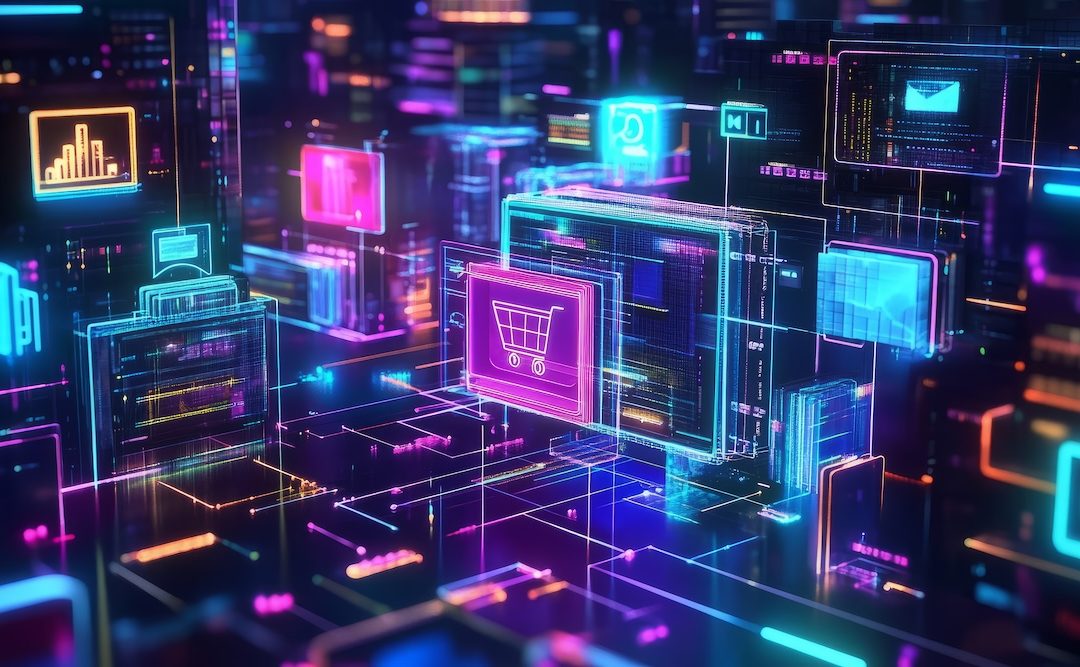It’s fair to say that self-service kiosks have changed the face of retail, hospitality and several other service industries. From the earliest automated ticketing booths and ATMs through to the explosion in supermarket self-checkout lanes and fast-food ordering points, kiosks have become a familiar feature of how we shop, dine, travel and more.
One of the defining characteristics of kiosks is that as the technology evolves, the number of applications increases. The arrival of large-form touchscreens, for example, was instrumental in the success of kiosks in the QSR sector, giving diners a reliable and user-friendly way to place their own orders. Now we’re seeing automated passport gates powered by biometric readers, specialised printers that dispense official documents and cards, and much more besides.
Which begs the question – what next? This is a particularly important question for the development of retail self-checkout systems. It’s fair to say that not everyone is a fan of self-checkout. The experience of the scanner or bagging area scales not working at supermarket self-service is something we can all relate to.
With some even claiming that self-checkout is a ‘failed experiment’, the technology stands at a crossroads. But given what we know about the pace of innovation in self-service hardware, we believe dismissing checkout kiosks in retail is premature. We fully expect the technology to evolve to address the present concerns, and for mainstream adoption right across retail to follow as a result. Here’s how.
More seamless transactions
For tapping an order into a screen or looking up information, there’s a lot of love for kiosks. But for transactions of physical goods, there’s still friction in the process.
This is simply down to the technology not quite being able to match user expectations. Barcode scanners, still the industry standard for logging items ready for sale in retail, are not the most efficient option. Retail staff get trained to scan items at checkout quickly and efficiently. Ordinary customers don’t. That’s always going to lead to friction.
The technology to solve this issue is already here. With Computer Vision AI, instead of customers having to scan individual items, all they have to do is make sure a camera can see them. AI will do the rest.
Alternatively, sensor-based systems that log items as customers place them in their basket could do away with the need for item recognition at checkout altogether. This is sometimes called ‘checkoutless’ or ‘Shop & Go’ technology. But kiosks still have a role to play in identifying and authenticating the customer and the transaction. By combining this with biometric systems to verify customer ID and authorise transactions, kiosks could offer ‘no-touch’ payment systems to further increase speed and efficiency.
Enhanced security
Another issue that self-checkout systems have struggled to shake off is the claim that they make theft easier and lead to increases in both intentional and unintentional shrinkage.
Again, rather than some rather kneejerk claims that this proves self-checkout is, we see it as an issue of technology needing time to catch up with real-world circumstances. And the solutions are more or less the same as those we highlighted above for making self-checkout experiences more seamless.
The transition from current scanning technologies to cameras, Computer Vision AI and on-shelf sensors won’t just speed up checkout. It will also tighten up security and improve inventory monitoring. Computer Vision AI can be trained to identify suspicious behaviour. Data from CCTV systems or shelf sensors can be mapped against items presented at checkout and flag up if anything is missing.
At the same time, biometric systems will give retailers an identification backstop that will serve as an effective deterrent against theft. Capturing a facial image of every customer that uses a kiosks, or requiring a fingerprint scan to process payment, would mean would-be thieves leaving concrete evidence behind that can be used to identify them if discrepancies are found.
All of the above is based on technologies that are already widely used in kiosk and POS systems. When you consider the benefits that extending their use and better integration can bring, it seems clear that the future of self-checkout is in good shape.
